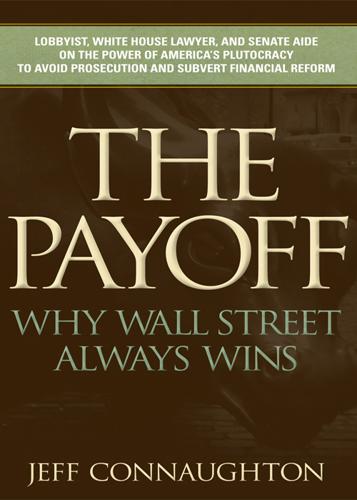
The Payoff
by
Jeff Connaughton
We wanted to learn about the status of its investigation into naked short selling of the stock of Bear Stearns and Lehman. At the briefing, SEC lawyers told us we’d have to be patient and that the investigation would take at least another year. They added that they couldn’t give us any details of the investigation but warned us that it’s almost impossible to prove intent under the current rule (that is, the reasonable-belief standard). Under this rule, anyone accused of naked short selling can simply say: “I reasonably believed I could find the stock in time.” In essence, the SEC lawyers confirmed our view that the rule against naked short selling was unenforceable and that they knew it.
…
We’d chatted for about fifteen minutes when Larry startled me by saying, “We want to be part of the solution, and we think we have a proposal that will work.” It turns out that months previously the DTCC had gone to the SEC with a proposed solution to naked short selling: The DTCC would create a computer system in which the actual shares of a stock must first be declimated (more simply: flagged or identified) before a broker could sell shares short. A centralized database would prevent the same shares from being used for multiple short sales. The DTCC believed that such a system would effectively stop naked short selling for the shares it cleared, which represented a vast majority of all shares traded in the United States. Larry told us that the SEC had received the DTCC proposal months ago but hadn’t done any follow-up.
…
It was here that he developed close friendships with a number of Republican senators, who responded to the sincerity of Ted’s faith. Senator Johnny Isakson (R-GA) was one of them. Isakson and Ted shared an interest in financial issues, and both had recently received complaints from constituents about the naked short selling of stocks by hedge funds and about the SEC’s rescission of the uptick rule. If you think a stock is undervalued, you can buy in the belief that its price will rise over time. If you think a stock is overvalued, you can sell it short in the belief that its price will drop over time. Selling short involves selling shares you don’t own.
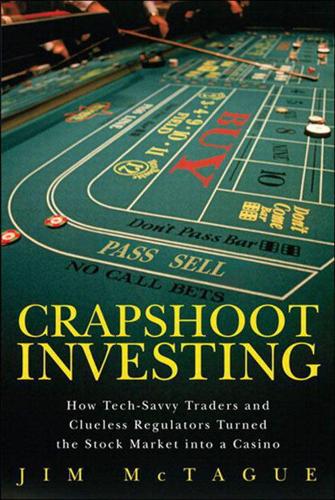
Crapshoot Investing: How Tech-Savvy Traders and Clueless Regulators Turned the Stock Market Into a Casino
by
Jim McTague
Published 1 Mar 2011
The creators of inverse exchange-traded funds, which increased in value as the market dropped, added that the uptick rule had interfered with the returns on their new, popular products. As soon as the rule disappeared, traders began engaging in a practice known as “naked” short selling, where speculators sold short stocks they didn’t physically possess. Actual shares are supposed to be borrowed from other investors in a short-selling transaction and returned when the short seller closes out his position with a purchase, but some investors were bending the rules. With naked short selling, it was theoretically possible to short more shares than a particular company actually had outstanding. In effect, it was a license to print stock certificates.
…
In perhaps what was his most frustrating experience as a senator, Kaufman failed to get Banking Committee Chairman Senator Chris Dodd, a fellow Democrat, to add language about HFT and naked short-selling to the financial reform legislation he was crafting with Representative Barney Frank of Massachusetts, chairman of the House Financial Services Committee. The bill would be the most far-reaching overhaul of Wall Street and banking in 20 years. Said Senator Kaufman, “We went to people and we said, ‘There’s this incredible problem.’ Their basic thinking was, number one, it has got to be something that demonstrably was part of the problem that brought the market down, and high-frequency trading and naked short selling were not part of that problem.”
…
Instead of reinstituting the rule, however, the SEC opted for a temporary ban in short selling of 799 financial stocks. Members of Congress wanted to prevent short sellers from driving down the stock prices of weak banks that were beneficiaries of federal bailout dollars. In October 2009, when the ban expired, program traders again engaged in naked short selling. In fact, the market plunged the day after the temporary ban was lifted. Connaughton came up with an idea for Kaufman to have a voice in reforming Wall Street even though he wasn’t a member of the Banking Committee: He convinced Kaufman to pretend that he was a member over the next two years.
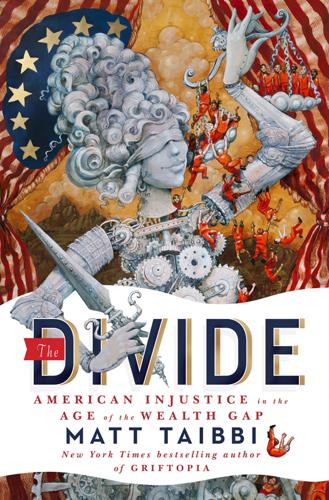
The Divide: American Injustice in the Age of the Wealth Gap
by
Matt Taibbi
Published 8 Apr 2014
Many of those tales revolve around the issue of naked short selling, a type of financial counterfeiting that allows short investors to artificially depress the stock prices of target companies. Whether naked short selling is a serious social contagion or meaningless conspiracy theory is a passionately debated topic on Wall Street, and to even broach the subject inspires strong emotions: right or wrong (and I believe wrong), in some quarters, if you bring it up at all, eyes roll automatically. One of the reasons I originally shied away from the Fairfax story was that it has a naked short-selling angle that makes some serious observers dismiss it out of hand as nutty conspiracy.
…
But for the most part, insider trading is a crime of fractional violence. You steal from uninformed investors all over the world, a few pennies or dollars at a time. The damage fans out evenly across a vast geography, and it’s hard to see. It’s because of this that lots of Wall Street people genuinely think of insider trading and naked short selling as victimless crimes. People get hurt, sure, but the victims are mostly sophisticated investors who should know better, and it’s not like you’re hitting them in the head with a brick or anything. It’s not a real crime. At least it doesn’t look like one. That may once have been true. But in the Fairfax case, the principals in this “victimless” scheme started to mimic the gangster aesthetic.
…
One of the reasons I originally shied away from the Fairfax story was that it has a naked short-selling angle that makes some serious observers dismiss it out of hand as nutty conspiracy. So even though naked short selling was actually a factor in the Fairfax case, I’ve left it out of this narrative, because it’s the other craziness that went on in this case that’s really interesting. *2 Buffett himself, it should be said, has seemed to go against his own principles. The legendary investor has been heavily criticized in the postcrash era for his investments in companies that seemed to violate his business principles, most notably a large share of the ratings agency Moody’s; Buffett had previously criticized the industry
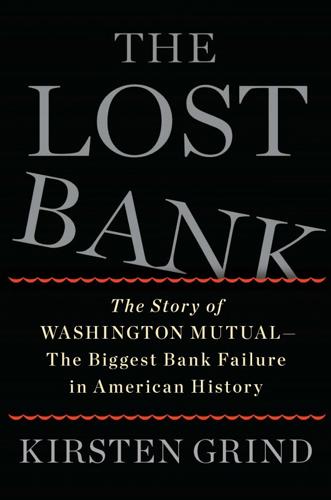
The Lost Bank: The Story of Washington Mutual-The Biggest Bank Failure in American History
by
Kirsten Grind
Published 11 Jun 2012
Short selling is essentially betting that a company will do badly: investors sell shares of borrowed stock (from a broker, for example) and then buy new shares to replace the old ones. If the new shares were bought for less than the original borrowed stock, the investor makes money. Naked short selling means that original shares aren’t borrowed. Either way, both forms of trading were driving down WaMu’s stock, which was now hovering around $3. Killinger thought Paulson could use his influence at the Securities and Exchange Commission (SEC) to help WaMu get on a list of 19 financial institutions temporarily protected from naked short selling. The SEC had given JPMorgan, Bank of America, and Citigroup this privilege. “What’s interesting about that list,” noted the Seattle Post-Intelligencer at the time, “is one name conspicuous by its absence—Seattle-based Washington Mutual Inc., whose stock has been of more than passing interest to short-sellers.”
…
See JPMorgan Chase Chase Home Finance, 104 Chicago, Illinois Jenne’s delinquent homeowner tour and, 171–72 WaMu branches in, 86, 108, 109 chief operating officer (COO), WaMu Pepper’s advice to Killinger about, 103–4 Rotella hired as first, 104–5, 106 Chrysler Financial, 235 Citigroup Dimon at, 230 as largest U.S. bank, 104 naked short selling protection for, 247 near failure of, 314, 314n OTS defense of oversight and, 317, 318 as potential buyer of WaMu, 3, 271, 282, 283, 289, 290, 298 TARP and, 315 Clark, Susie, 224 Clinton, Bill, 64, 113, 155 CNBC, 212, 267 CNN, 267 Coburn, Tom, 135 Cohen, H. Rodgin, 232, 233 Collateralized Debt Obligations (CDOs), 158, 295, 295n commercial real estate loans, 26–27 community banks: closure of, 319–20 Community Fulfillment Centers, WaMu, 142–43, 144–45, 144n, 159, 166 Community Reinvestment Act, 59 compensation Countrywide-WaMu competition and, 160 five emissaries–Killinger discussion about, 204–5 for fixed-rate loans/mortgages, 128, 129, 197 for Goldman Sachs board members, 164 for loan consultants, 117, 128–29, 188, 196, 197 at Long Beach Mortgage, 69–70, 78, 166–67 for Option ARMs sales, 117, 197 Pepper’s advice to Killinger about, 103–4 for real estate agents, 143 for salespeople, 140, 166–67 shareholders concerns about WaMu, 187–88 for subprime loans, 197 for WaMu board members, 164 for WaMu senior executives, 131, 187–88 See also specific person Congress, U.S.
…
See secondary market; shareholders/investors, WaMu; type of investor irrational money lenders, Killinger’s comment about, 163, 170, 240 Jenne, Kevin, 112–18, 167–68, 170–72 Jiminez (Ramona and Gerardo) family: mortgage loan to, 154–57, 172–73, 331–32 Johnson, Earvin “Magic,” 141–42 JPMorgan Chase assets of, 229 Bair meetings with representatives from, 232–33, 266, 316 Bank One acquisition by, 104–5, 230 Bear Stearns acquisition by, 187, 232, 246, 325, 329 board of, 295 bundling of mortgage-backed securities by, 120 Dimon appointment as president and COO of, 105 FDIC-OTS relationship and, 251 FDIC relationship with, 232, 246, 316 Great Depression and, 212 high-risk mortgages at, 138 home equity loans at, 325 investor conference call at, 301, 304 as largest company in world, 329 lawsuits against, 326 losses at, 325 Morgan Stanley acquisition rumors and, 287, 293 OTS/Reich and, 233–35, 283 philanthropy of, 326–28 political connections of, 231 regulators’ meetings with, 232–34 Rotella hiring of employees from, 107 SEC protection from naked short selling of, 247 shareholders at, 325 subprime mortgages and, 325 TARP and, 315, 328 See also JPMorgan Chase, WaMu and; specific person JPMorgan Chase, WaMu and acquisition of WaMu by, 3, 4, 6, 7, 300, 321–22 bidding for WaMu by, 300, 316–17 Chapman’s (Fay) recommendation to sell WaMu to, 179 closure of WaMu and, 301, 316–17 conversion of WaMu by, 320–24 direct negotiations for JPM acquisition of WaMu and, 189, 195, 229–38, 238n FDIC sale of WaMu and, 274–75, 289–90, 292–93, 298, 300, 316–17 and Fishman attempts to sell WaMu to JPM, 271–72 and funding for WaMu acquisition, 301, 304, 304n hostile takeover of WaMu proposal by, 245–46 Moody’s downgrade of WaMu and, 290 Paulson’s views about WaMu offer from, 248 plans for acquisition of WaMu by, 266, 274–75, 275n, 283–84, 295 press conference of, 4 profits on WaMu purchase by, 328–29 renegotiation of WaMu borrowers with, 332 rumors about WaMu deal with, 267, 268 rumors about WaMu health and, 214 Santander-JPM bid-rigging allegations and, 282n and WaMu as government-assisted deal, 266 WaMu online data room and, 291, 322 and WaMu sale as “government assistance” transaction, 246, 246n WaMu stockholders and, 245–46 junk bonds, 28 Justice Department, U.S., 60, 332 Kashkari, Neel, 315 Kaufman, Ted, 126, 330 Kelly, Edward “Ned,” 289, 298 Keystone Holdings, 42 Kido, Ken, 209–10, 281 Killinger, Brad, 29, 33, 37, 45, 81 Killinger, Bryan, 29, 33, 35, 36, 37, 45, 81 Killinger, Debbie, 29, 30, 33, 34–36, 37, 43, 45, 46, 79, 80–84, 88, 311 Killinger, Karl, 33–34, 35, 37 Killinger, Kerry absence from Seattle office of, 93–94 as Alexander the Great, 88 appearance of, 88, 189 appointment as president and CEO of, 30, 309 Baker e-mail about housing to, 152 as “Banker of the Year,” 87 blame for WaMu problems and, 241, 330 board memberships of, 83 board regulators meeting and, 192–93 caricatures of, 49, 322 compensation for, 45, 94, 104, 174, 205 congressional testimonies of, 329–31 corporate jets and, 88–89, 97, 174, 205 demands for resignation of, 195, 205 dilemma of, 121–22 employee views about, 93–94, 177, 180, 201–2, 241–42 FDIC lawsuit against, 333–34 firing of, 3, 252–53, 254, 263 five emissaries meeting with, 203–6 hiring by, 98–99 Linda thanked by, 196 management style of, 52, 55, 57, 62–63, 87, 96, 123, 174–76, 177 marginalization and isolation of, 201–2 marital problems of, 80–83 McKinsey review and, 241–42 McMurray’s report and, 186–87, 201 media criticisms of, 102, 308 nickname for, 33 NYSE bell ringing and, 54 optimism of, 173–75 organization and structure of WaMu and, 67, 96, 101, 108 OTS pressures to replace, 255 Pepper’s advice to, 102–4, 133–35, 133n Pepper’s CD gift to, 30–31 Pepper’s hiring of, 18, 19 Pepper’s relationship with, 149, 309 as Pepper’s successor, 27–31, 205 Pepper’s views about, 29–30, 87, 102–4 Pepper’s visits to WaMu and, 148 personal life of, 33–38, 45–46, 52–53, 80–84, 94 personality and character of, 28–29, 36–37, 43, 44, 45–46, 47, 53, 87–88, 90–91, 102, 105, 132, 135, 173–75, 199–200 plans/vision for WaMu of, 67, 85, 86, 87, 88, 96, 108, 109, 122–23, 228–29, 240, 241 political connections of, 231 popularity of, 87, 93 potential successors to, 106, 107, 175, 202 professional background of, 18–19, 28, 29, 37, 38 reputation/image of, 43, 44, 88, 99 resignation thoughts of, 175 sale of WaMu and, 179, 330 Seattle office of, 32–33, 95 severance package for, 258 shareholder/investor relations and, 47, 55, 81–82, 102, 173, 188, 189–91, 193–200 shareholder lawsuits against, 102, 178 stress on, 190, 241 surprise birthday party for, 79–80 as WaMu board chairman, 30, 200, 239, 240–41, 309 WaMu board relationship with, 164–65, 170, 186–87, 239 WaMu as “category killer” and, 91 WaMu culture/values and, 94–95, 98, 107, 132–33 WaMu reunions and, 308–9, 311 wealth of, 37–38, 46, 82–83 work ethic of, 35 See also specific person, merger, acquisition, or topic Killinger, Linda Cottington, 83–84, 89–90, 94, 174, 196, 205, 231, 308, 309, 328, 333 Kohn, Donald, 250, 252, 275, 294, 295–96 Korea Development Bank (KDB), 261 Korszner, Randy, 275 Kovacevich, Richard, 297 Ladder Capital, 254 Lannoye, Lee Killinger–five emissaries meeting and, 203–6 Long Beach Mortgage acquisition and, 59–60, 62–63 retirement of, 62 at shareholders 2008 meeting, 197–99 Last Hurrah Party, WaMu, 322 Lehman Brothers as advisor to WaMu, 228 bankruptcy of, 270, 272, 273, 296 capital raise at, 187 concerns about survival of, 260, 261 decision not to bail out, 269 decline in stock price of, 260, 261 Financial Services Conference of, 87 Great Western acquisition and, 41, 44 impact on borrowing at Fed’s discount window of, 285 impact on WaMu of problems at, 268, 272, 273, 296 KDB deal and, 261 losses at, 261, 263 mortgage-backed securities sales at, 120 Lehman Investors Conference, 153, 173 Leonard, Andrew, 128 Leppert, Tom, 163 Lereah, David, 136, 152, 152n Levin, Carl: Senate Committee hearings and, 318, 329–31, 334 Lewis, Kenneth D., 125, 231 Lillis, Charles, 164 liquidity, WaMu Break the Bank model for, 215, 248, 278 Cantwell-Paulson conversation about, 293 closing of banks and ratio for, 215 closure of WaMu and, 299–300, 300n, 304–5 FDIC-OTS-WaMu discussion about, 244 Fishman capital raise plan and, 294 Fishman letter to customers about, 280 Moody’s-WaMu meeting about, 265 OTS press release about, 304–5 OTS report and, 300 regulators’ concerns about, 250 sale of WaMu and, 284, 290 WaMu reports to regulators about, 286, 299 See also bank runs, WaMu; credit lines The Little Prince (children’s book), 49 loan consultants/managers compensation for, 117, 128–29, 188, 196, 197 Countrywide-WaMu competition and, 126–28 fraud among, 145 Jenne’s Option ARMs focus groups and, 116–18 layoffs of, 188 at President’s Club meetings, 142–44 pressures on, 129 underwriting guidelines and, 125–26 See also Ramirez, Tom Long Beach Mortgage AIG report about, 166 Ameriquest loans compared with those of, 154n assets of, 58 audits of, 166, 167 California regulation of, 66 change from thrift to mortgage company of, 64–65 Chapman (Craig) as manager of, 66, 78, 101 Chapman (Craig)-Rotella relationship and, 128 Chapman’s (Fay) concerns about, 56–58, 60–61, 62, 63, 72, 75–78 compensation at, 69–70, 78, 129, 166–67 Countrywide-WaMu competition and, 127 culture at, 63–64 Davis (Craig) as head of, 75–76 defaults and delinquencies at, 137, 153 expansion of, 78, 136–37 founding of, 63 fraud and, 71–73, 76, 93, 154, 166 funding for mortgage brokers and, 129 Goldman Sachs relationship with, 121, 131, 157 “higher-risk lending strategy” and, 122 Home Loans Group and problems at, 167 Justice Department accusation against, 60 Killinger and, 57, 58, 62–63, 75, 76, 78, 137–38 Lannoye opposition to, 197–98 losses at, 66 mortgage-backed securities sales at, 67, 73–75 off-loading of risky loans and, 157 OTS concerns about, 223–24 oversight of, 65, 66, 137 paperwork problems at, 332 privatization of, 66 profits of, 64, 65, 71 proposal to shut down, 76, 78 public offering for, 65 repurchase of mortgage-backed securities by, 137 reputation of, 157, 176 Rotella and, 109–10, 128, 137–38 subprime mortgages at, 63, 69, 71, 75, 167–68 underwriting guidelines for, 56, 65–66, 67, 78, 125, 137–38, 167 WaMu acquisition of, 58, 59–60, 62, 63 WaMu reviews of, 57, 76–78 See also Jiminez (Ramona and Gerardo) family: mortgage loan to Longbrake, Bill end of savings and loan banks comment of, 318 hiring of, 18 housing market warnings of, 161–63 junk bond incident and, 28 Killinger as Pepper successor and, 28 NYSE bell ringing and, 54 Pepper appointment as temporary CEO and, 10–11 personal and professional background of, 28, 98 as potential Pepper successor, 27, 29, 205 WaMu departure of, 98 WaMu responsibilities of, 98 Los Angeles Times, 71, 242–43 Mad Money (TV show), 246–47 Magleby, Alan, 297 Maher, John, 40, 42, 43–44, 45, 60 Market Research Department, WaMu, 192 See also Jenne, Kevin Martinez, Melissa, 126 Matthews, Phillip, 164 McCain, John, 264, 301 McGee, Liam, 255 McKinsey Group, 241–42 McMurray, John, 186–87, 186n, 201–2, 260–61, 264, 266, 269, 270, 288, 301 media bailout reports by, 2 bank runs and, 2, 201, 207–8, 209, 211–12, 214, 215, 243, 279, 282 criticisms of Killinger by, 102, 308–9 Dimon’s Seattle address and, 326–27 end of modern Wall Street proclaimed by, 288 FDIC seizure of WaMu and, 300–301, 302, 303 Fishman appointment announced in, 258 IndyMac failure and, 207–8, 209, 242–43 JPM merger offer to WaMu and, 237–38 Kido interview with, 281 Killinger firing reported in, 254 Lehman problems and, 270 Paulson interview with, 284–85 Pepper and, 309–10 sale of WaMu rumors and, 279, 288, 289, 298–99, 300–301, 302 and WaMu failure as nonevent, 314 WaMu final hours and, 267–68, 272, 276, 279, 281, 282, 288, 289, 292, 298–99, 300–301, 302 WaMu information lockdown and, 281 WaMu layoffs and, 321 WaMu shareholder meetings and, 189 See also specific media organization Meola, Tony, 75, 76, 142, 144, 145 “Merge with Washington Mutual!”
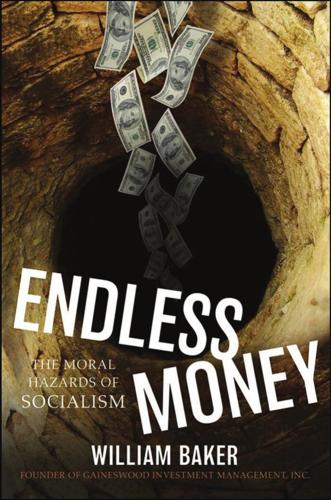
Endless Money: The Moral Hazards of Socialism
by
William Baker
and
Addison Wiggin
Published 2 Nov 2009
But what is far more relevant is the SEC’s tacit allowance of naked short selling through what became known as the “Madoff Rule,” which exempted market makers from the same requirements to deliver stock after stock sales. This essentially provided broker-dealers with the ability to legally counterfeit securities, and to rent this resource out to hedge fund clients. Patrick Byrne, CEO of Overstock.com, a company victimized by relentless naked short selling, worked with reporter Mark Mitchell to reveal the extent of the naked short-selling problem through his web site www.deepcapture.com. Clearly this activity has been pernicious to the equity of some companies.
…
Certain of their brokers secured special regulations that unfairly advantaged large customers, many of which manipulated commodity prices. Their use of short selling was heavily directed against the financial sector itself, and by July 2008 Congress looked into the matter, triggering the SEC to ban “naked” short selling of the common stocks of 19 banks and brokers. By generating such a list, the government favored some companies over others, socialistically guiding where dollars may and may not flow, to the detriment of others not privileged enough to 140 ENDLESS MONEY make the list. In September, the list was expanded to cover 799 financial firms for which no short selling would be permitted, even when it would be done with borrowed shares.2 The Congressional hearings are reminiscent of the government’s scrutiny of capital pools in the early 1930s.
…
Some think ETFs could fail because the custodians of their gold may be leasing out their deposits to traders at bullion banks who are selling the metal short to earn an interest spread. This may explain the churning in the gold markets in 2008-2009 and the heavy technical resistance seen at about $1,000 per ounce. In response to this fear, many have begun to buy specie instead, which would reveal this subterfuge and also suspected naked short selling by bullion banks generally. An interesting alternative to specie is digital gold, essentially deposit accounts that enable electronic transactions for commerce that are 100 percent reserved. James Turk pioneered this product, goldmoney.com, which had about $700 million of holdings in mid-2009.
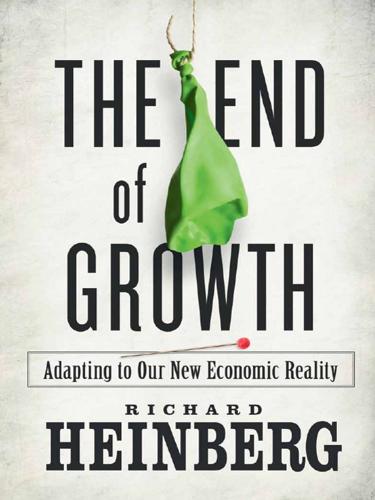
The End of Growth: Adapting to Our New Economic Reality
by
Richard Heinberg
Published 1 Jun 2011
The answer: short selling (also known as shorting or going short), which involves borrowing the assets (usually securities borrowed from a broker, for a fee) and immediately selling them, waiting for the price of those assets to fall, buying them back at the depressed price, then returning them to the lender and pocketing the price difference. Of course, if the price of the assets rises, the short seller loses money. If this sounds dodgy, then consider naked short selling, in which the investor sells a financial instrument without bothering first to buy or borrow it, or even to ensure that it can be borrowed. Naked short selling is illegal in the US, but many knowledgeable commentators assert that the practice is widespread nonetheless. In the boom years leading up to the 2007–2008 crash, it was often the wealthiest individuals who engaged in the riskiest financial behavior.
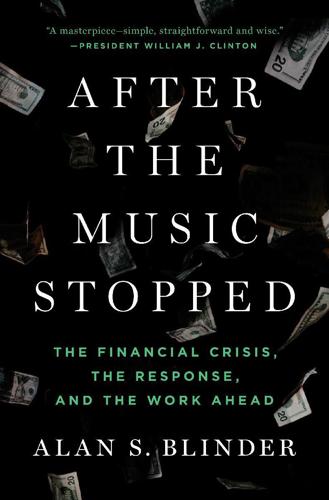
After the Music Stopped: The Financial Crisis, the Response, and the Work Ahead
by
Alan S. Blinder
Published 24 Jan 2013
On Bear Stearns Day, Lehman’s CEO Richard “Dick” Fuld knew that his company was in the crosshairs, and when the stock market opened on the next Monday, Lehman’s stock was, indeed, pummeled. As he later lamented to the FCIC, “Bear went down on rumors and a liquidity crisis of confidence. Immediately thereafter, the rumors and the naked short-selling came after us.” It certainly did. But Lehman managed to hold things together for another six months. Lehman’s primary regulator was the same as Bear’s: the somnolent SEC. After the Bear Stearns bailout, however, and especially after the Fed began lending to broker-dealers, the central bank started watching over Lehman Brothers and the other three Wall Street giants—with supervision, stress tests, requests for data, and the like.
…
“‘save their ass’”: Paulson, On the Brink, 144. “you may not have to take it out”: Paulson, On the Brink, 151. “hardest thing I had ever done”: Paulson, On the Brink, 170. $200 billion worth of repos outstanding: FCIC Report, 326. “what we learned scared us”: Paulson, On the Brink, 121. “naked short-selling came after us”: FCIC Report, 326–27. better than they actually were: See Latman, “New York Accuses Ernst & Young of Fraud in Lehman Collapse,” New York Times. longer-term debt by June: FCIC Report, 326. rejected the idea as “gimmicky”: FCIC Report, 328. $55 billion loan from the Fed: FCIC Report, 328.
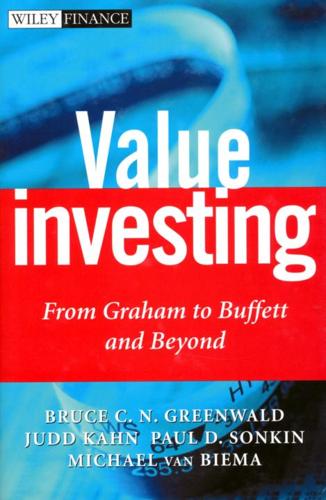
Value Investing: From Graham to Buffett and Beyond
by
Bruce C. N. Greenwald
,
Judd Kahn
,
Paul D. Sonkin
and
Michael van Biema
Published 26 Jan 2004
Even the more contemporary and supposedly scientific version of hedging-the idea that certain positions can be counted upon to converge in price over time and that money can be made by pairing long and short positions as a bet on that convergence-has proved vulnerable to the point of a Federal Reserve intervention. Klarman, recognizing how much rides on those kinds of bets, especially when leverage is employed, steers clear of that kind of hedging. He does not employ naked short selling as a strategy, fearing the skewed risk of unlimited loss on a short position that moves higher. He will commit a portion of his funds to buying put options on a stock index, to hedge against a broad decline in the market. But that strategy is genuinely buying an insurance policy, a cost that will slightly reduce returns if everything works as intended but will offer some protection should the market drop.
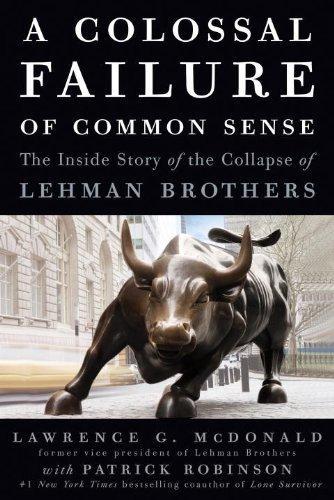
A Colossal Failure of Common Sense: The Inside Story of the Collapse of Lehman Brothers
by
Lawrence G. Mcdonald
and
Patrick Robinson
Published 21 Jul 2009
We suddenly had a commando squad of MIT- and Harvard-educated multimillionaires preparing to go into combat against $120,000-a-year civil service regulators. It never did seem like an even match to me. What Wall Street’s financial maestros came up with while the SEC guys were consumed with backdated options, insider trading, and naked short-selling was something brand-new—a fee-generating machine hereinafter referred to as the dreaded credit derivatives, also known as securitization. They invented a method of turning a thousand mortgages into a bond with an attractive coupon of 7 or 8 percent. This high-yield bond could be traded, and hence turned into a profit generator; it would enable the mortgage brokers, investment banks, and bondholders to reap a very nice annual reward—just so long as the homeowners kept right on paying on time every month, and the U.S. housing market held up the way it always had.
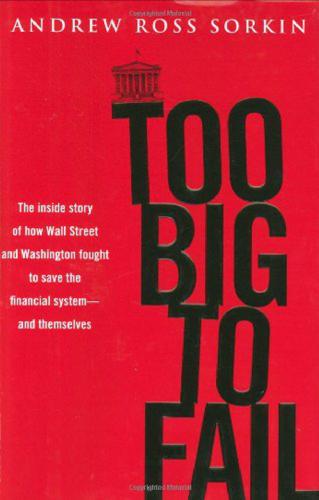
Too big to fail: the inside story of how Wall Street and Washington fought to save the financial system from crisis--and themselves
by
Andrew Ross Sorkin
Published 15 Oct 2009
See http://www.treas.gov/press/ releases/hp1079.htm. “Our proposal”: “Part I, Part II of a Hearing of the Senate Banking, Housing and Urban Affairs Committee,” Federal News Service, July 15, 2008. SEC to begin cracking down on improper short selling: The SEC issued an emergency diktat to halt “unlawful manipulation through ‘naked’ short selling,” which was set to start that Monday, July 21, 2008, and expire after thirty days. Kara Scannell and Jenny Strasburg, “SEC Moves to Curb Short-Selling,” Wall Street Journal, July 16, 2008. Lehman’s board: Dennis K. Berman, “Where Was Lehman’s Board?” WSJ Blog/Deal Journal, September 15, 2008.